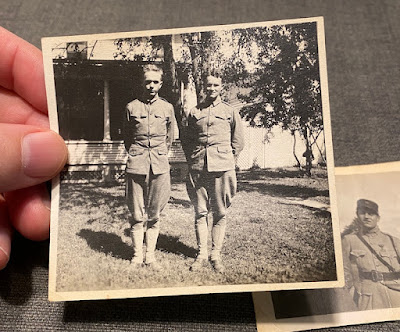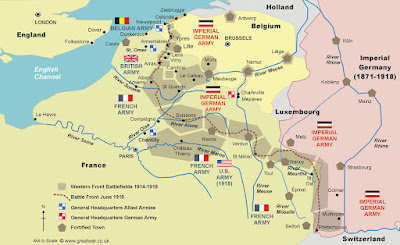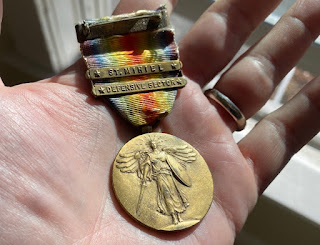Continuing the I Lamont family history series, this time prompted by Veteran's Day. More than a century ago, my great uncle Adrian stepped off a troop transport in France and into the maw of the greatest war Europe had ever experienced.
It would in fact be known as the "Great War" for several decades, but we now call it World War I. By April 1917, the European powers had been pounding away at each other for 3 years. Millions had died. The fields of northern France and Belgium were pockmarked by craters and crossed by trenches and fortifications. It was a stalemate.
The American "doughboys" were there to break it. My great uncle, along with most of his all-male college classmates, enlisted as soon as exams were over in the spring of 1917.
He was sent to officer’s training camp in Plattsburgh, New York, and by the end of the summer was commissioned a 2nd Lieutenant in the field artillery, assigned to the 18th Calvary. He was commissioned 1st Lieutenant that fall, and sent to San Antonio that winter. The photo below is from the training period. He's on the right:
The following May, in the spring of 1918, they were thrown into the war. I can only imagine the feeling of foreboding as his unit traveled inland to eastern France, passing blown-out buildings, blasted trees, military camps, and wounded and dead being brought back from the front. There would be the sounds of conflict. Artillery. Machine guns. Gas sirens. Airplanes.
This was different than their training experience back in the U.S. Now it was for real. A few miles away, German forces were firing guns and dropping bombs, in an effort to maim or kill them and stop the reinvigorated Allied forces from advancing. And the doughboys were trying to do the same with their weapons. This map shows the approximate location of the front from 1916 to 1918:
“For distinguished conduct in action, for exceptional devotion to duty, energy and courage. On the day of November 7, 1918, while at a forward observation post adjusting fire in preparation for firing accurate barrages, was subjected to heavy enemy shell fire but displayed great courage by remaining at his post until the work had been accomplished. This is in the vicinity of Jaulny, France."
November 7, 1918, was the 6th week of the Meuse-Argonne offensive and a mere four days before the Armistice. He almost didn't make it. We still have one of his medals, from the earlier battle at the St. Mihiel salient:
But we have an even more important reminder of the bravery of this young man more than 100 years ago. We named our son after him.


No comments:
Post a Comment
All comments will be reviewed before being published. Spam, off-topic or hateful comments will be removed.